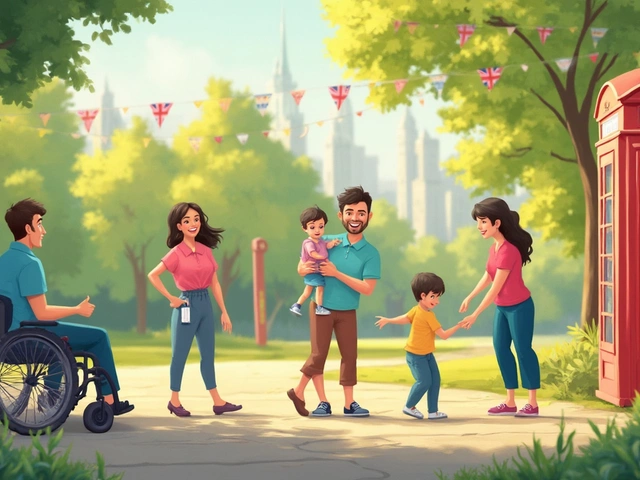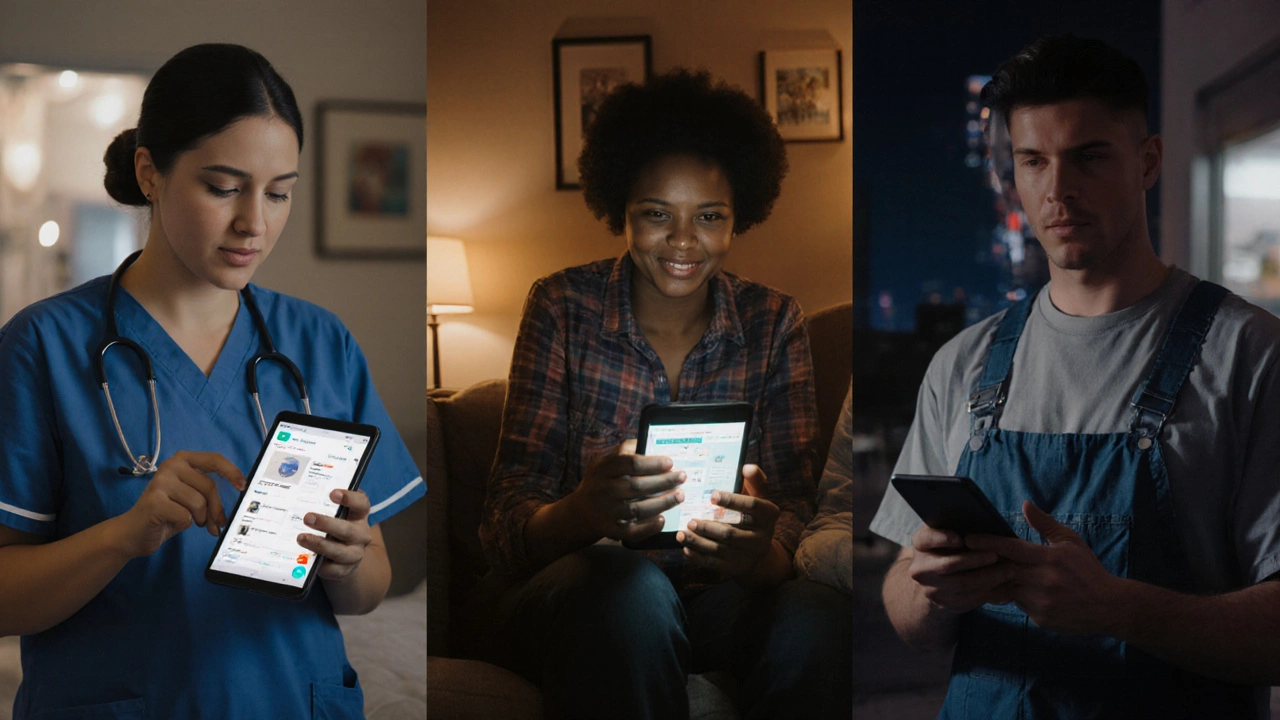Asynchronous Learning Fit Assessment
Let's find your learning fit
Answer a few questions to determine if asynchronous learning is right for you.
Asynchronous learning works best when your schedule aligns with its flexibility. According to the article, 82% of working adults choose asynchronous courses because they can fit learning into their schedules.
Your Results
When people think of distance learning, they often picture students sitting at home with a laptop, watching videos or reading PDFs. But that’s just one piece of the puzzle. The most popular type of distance learning today isn’t just about watching lectures-it’s asynchronous online learning. It’s the backbone of everything from high school credit recovery to corporate training and university degrees. And here’s why it dominates: flexibility.
Why Asynchronous Learning Wins
Asynchronous learning means you don’t have to be online at the same time as your teacher or classmates. You watch a recorded lecture at 10 p.m. after your shift. You submit your essay on Sunday night. You join a discussion board when you have five free minutes between childcare duties. There’s no clock watching. No rushing to log in before class starts. This is the model used by 78% of accredited online degree programs in the U.S. as of 2025, according to the National Center for Education Statistics.
It’s not just for college students. A 2024 survey of 12,000 working adults found that 82% chose asynchronous courses because they could fit learning into their schedules-not the other way around. A nurse working night shifts in Texas, a single parent in Ohio, a factory worker in Michigan-all of them rely on this model to earn certifications, upgrade skills, or finish degrees they started years ago.
How It Actually Works
Asynchronous learning isn’t just a bunch of videos thrown online. It’s carefully designed. A typical course includes:
- Pre-recorded video lessons (5-15 minutes each, broken into digestible chunks)
- Downloadable readings, PDFs, or interactive modules
- Discussion boards where students reply to prompts and each other
- Quizzes with instant feedback
- Assignments with clear deadlines-usually weekly
- Email or messaging support from instructors
Platforms like Canvas, Moodle, and Blackboard are built around this structure. Even big players like Coursera and edX use it as their default. You don’t need to be tech-savvy. Most platforms work on phones. You can download videos for offline viewing. You can pause, rewind, and rewatch until it clicks.
What About Live Classes? Are They Still Used?
Synchronous learning-where everyone logs in at the same time for a live Zoom lecture-is still around. But it’s not the most popular. It’s used in about 22% of online programs, mostly in graduate schools, professional certifications, or programs that require group interaction like therapy training or language immersion.
Why isn’t it the leader? Because it’s harder to scale. If you’re in a different time zone, have a second job, or are caring for someone, live classes become a barrier, not a benefit. A 2023 study from the University of Michigan found that students in synchronous courses had a 34% higher dropout rate than those in asynchronous ones-especially among adult learners.
Some programs mix both: record the lecture for later viewing, then hold optional live Q&A sessions. That’s the sweet spot. But the core content? Still asynchronous.

MOOCs and Free Courses-Are They the Same?
You might hear people say “MOOCs” when they talk about online learning. Massive Open Online Courses, like those from Harvard or MIT on edX, are mostly asynchronous. You get videos, readings, quizzes, and peer-reviewed assignments. You can start anytime. You can finish in six weeks or six months. No deadlines unless you want a certificate.
MOOCs helped popularize asynchronous learning. They showed millions of people that you don’t need to enroll in a university to learn something valuable. But MOOCs are just one type of asynchronous course. Most corporate training, K-12 online schools, and community college programs use the same model-they just charge for it or require enrollment.
Who Uses It the Most?
Let’s break it down by group:
- Adult learners (25+): 89% choose asynchronous options. They need control over their time.
- High school students: 71% of online high school programs use asynchronous models. Helps with sports, jobs, or health issues.
- Working professionals: 85% of employers who offer online upskilling use asynchronous platforms. Easy to track progress without disrupting work.
- International students: Time zones make live classes impossible. Asynchronous is the only practical option.
Even in countries with strict education systems-like Germany or Japan-online public programs now default to asynchronous formats. It’s not a trend. It’s the standard.

What About Engagement? Doesn’t It Get Boring?
People assume that if you’re not in a live class, you’ll get distracted. But engagement isn’t about being in the same room-it’s about design. Good asynchronous courses use:
- Short videos with clear goals
- Interactive quizzes that adapt to your answers
- Peer discussions with prompts like “Tell us how you applied this at work”
- Progress bars and badges that show how far you’ve come
A 2024 study from Stanford’s Online Learning Lab found that students in well-designed asynchronous courses completed 92% of their assignments-higher than those in live classes. Why? Because they could learn at their own pace, revisit confusing parts, and avoid the pressure of being put on the spot.
What’s the Future?
Asynchronous learning isn’t going away. It’s getting smarter. AI tutors now give personalized feedback on essays. Voice recognition helps language learners practice pronunciation without waiting for a teacher. Mobile apps send reminders and mini-quizzes during commutes.
Some schools are testing “hybrid asynchronous” models-where students choose their own weekly learning path based on their goals. One community college in Colorado lets students pick between 3 different formats for each module: video, text-only, or audio podcast. They’ve seen a 40% increase in completion rates.
Even governments are catching on. The UK’s National Skills Fund now funds only asynchronous courses for adult retraining. Canada’s provincial programs follow the same rule. It’s not about convenience anymore-it’s about access.
Is It Right for You?
Asynchronous learning works best if you:
- Can manage your own time
- Are comfortable reading and writing (most communication is text-based)
- Don’t need constant social pressure to stay on track
- Have a stable internet connection-even if it’s slow
If you thrive on real-time feedback, group energy, or live debates, you might want to look for programs that offer optional live sessions. But if your goal is to learn something new without upending your life, asynchronous is the clear winner.
Is asynchronous learning the same as self-paced learning?
Yes, essentially. Asynchronous learning is a form of self-paced learning where you control when you access materials. The difference is subtle: "self-paced" focuses on your speed, while "asynchronous" refers to the structure-no live sessions, no fixed meeting times. All asynchronous courses are self-paced, but not all self-paced courses are fully asynchronous (some might have live check-ins).
Do employers recognize certificates from asynchronous courses?
Absolutely. Employers care more about the skills you gained than how you learned them. Certificates from accredited institutions like Coursera, edX, or state universities are widely accepted. A 2025 LinkedIn report showed that 64% of hiring managers view online certificates from reputable platforms as equal to traditional coursework-especially in tech, healthcare, and business fields.
Can you get a full degree through asynchronous learning?
Yes. Over 1,200 accredited U.S. colleges now offer fully online degrees using asynchronous models. Schools like Arizona State University, University of Florida, and Southern New Hampshire University have tens of thousands of students enrolled in these programs. Degrees are identical to on-campus ones-same diploma, same accreditation, same academic rigor.
What if I struggle with motivation without live classes?
Many students feel this way. The key is structure. Set a weekly schedule-even if it’s just 30 minutes a day. Use calendar alerts. Join a study group on the course forum. Some platforms offer optional accountability coaches or peer check-ins. If you’re really stuck, look for programs that include weekly email nudges or progress reports. Motivation isn’t about being in a room-it’s about building habits.
Are asynchronous courses cheaper than live online classes?
Usually, yes. Asynchronous courses cost less because they require fewer live instructors and real-time support staff. A typical asynchronous online course at a public university costs $300-$600 per credit, while live synchronous courses can run $500-$800. Free MOOCs are also asynchronous, making them the most affordable option.






